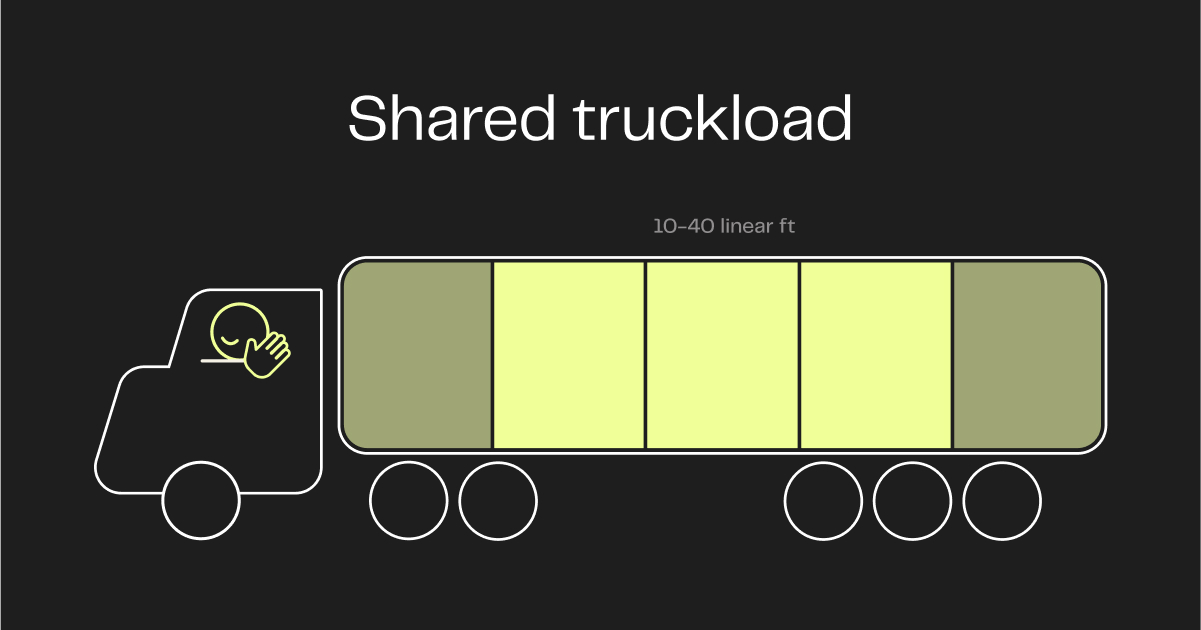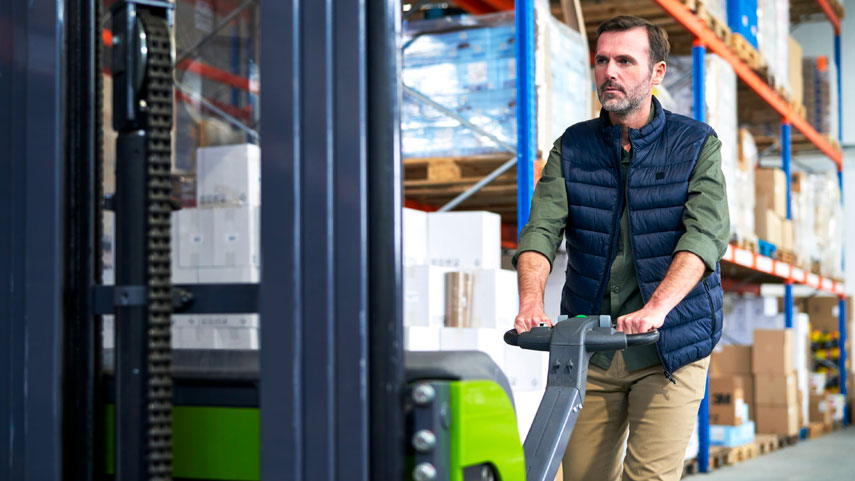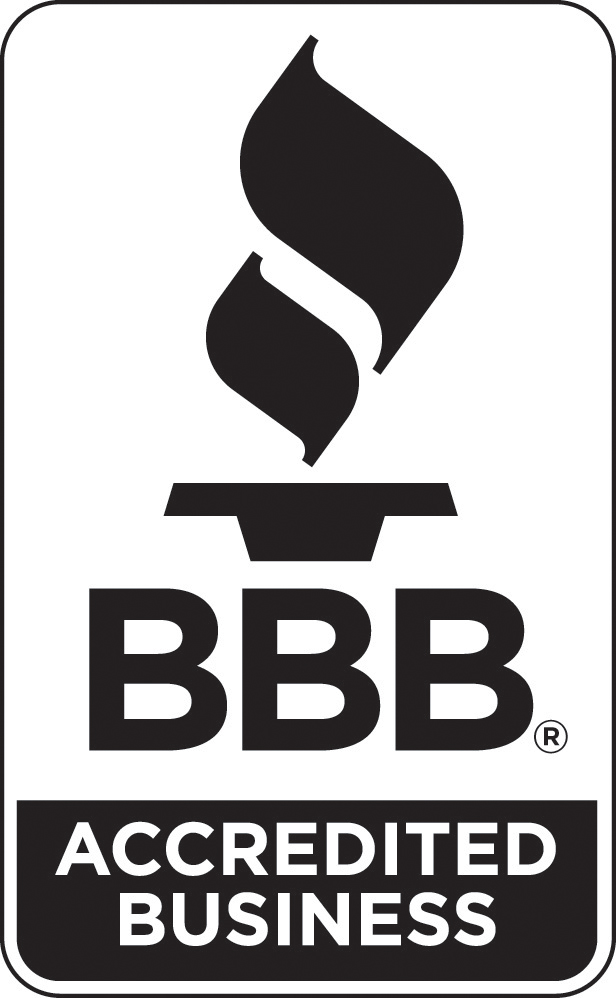What Is Shared Truckload?

Shared truckload (STL) shipping is a shipping mode that uses Flock’s patented technology to match freight with empty space in trucks headed on a similar route. While any size shipment can move via STL, it works great with midsize, 10-40 linear feet freight.Flock’s sophisticated algorithm factors locations, schedules, and load sizes to pool compatible shipments from multiple parties to share – and fill – available trailer space. The algorithm also finds the best route, sending the full truck on an optimal, hubless path that avoids time-consuming stops at consolidation warehouses or LTL terminals.Basically, when you ship STL, you get the advantages of full truckload (FTL) shipping without needing to fill or pay for an entire truck. This means less damage, faster delivery times, no accessorial fees, increased security, and overall cheaper rates. Additionally, STL is more environmentally-friendly than other shipping modes. The optimized, shared truck space eliminates wasted fuel and unnecessary trips. STL’s streamlined travel reduces greenhouse gas emissions by up to 40%. Its hubless transportation removes carbon-intensive and energy-consuming LTL terminals and the reduction in damaged goods means less of a need to remanufacture and reship. Continue reading to explore how shared truckload stacks up against less than truckload and traditional shipping consolidation, how shared truckload benefits both shippers and carriers, and how FlockDirect® guarantees truckload service for any size shipment.
Shared truckload vs. less than truckload
Less than truckload (LTL) shipping is a shipping mode where trucking companies consolidate multiple shipments to maximize the trailer’s space. LTL freight does not require the entire capacity of the truckload trailer, meaning it weighs less than 7,500 pounds and less than 12 feet of trailer space. There are several advantages that make LTL shipping an attractive option. Since LTL freight combines shipments to fully utilize truck space, your upfront cost is typically lower than other shipping modes. Despite this cost advantage, LTL shipping has the highest rate of damage due to excess handling during transloading at terminals. For instance, in 2022, 86% of LTL shippers replaced/reshipped damaged freight. Additionally, LTL shipping is plagued by surprise accessorial fees for freight class, weight, and pickup and drop-off destination codes. While STL and LTL shipping both combine shipments to fully utilize truck space and only charge you for the space you need, only STL freight travels on direct, hubless routes and achieves 99.8% damage-free deliveries. Here’s a brief comparison table that summarizes the differences between STL and LTL. STLLTLRatesLowLowDamage-rateLowHighLate FeesLowHighDelivery SpeedFastSlowSustainabilityMost sustainable option for shipments that don’t fill a truckLeast sustainableHandlingMinimalIncreased
Shared truckload vs. traditional shipping consolidation
Shipping consolidation, or partial truckload (PTL), combines multiple shipments into one full truckload. Typically, freight is collected and transported to a consolidation warehouse that’s central to each shipment’s final destination. Here, the freight is unloaded, sorted, and dispatched for final delivery.Partial truckload shipping caters to shipments that don’t fill a truck but are too big for LTL. Partial shipments usually consist of 5-22 pallets and weigh between 5,000 and 40,000 pounds. Although similar to the process of bringing shipments together to be consolidated, a key difference between STL and PTL is that STL combines the shipments prior to an actual pickup which allows for improved delivery times. Instead of transporting freight to a consolidation center, STL freight travels directly from its pickup location to its destination without passing through hubs or terminals. This results in less handling, and less damage, than PTL along with faster delivery times. See below for a table that summarizes the differences between STL and PTL. STLPTLRatesLowLowDamage-rateLowHighLate FeesLowHighDelivery SpeedFastSlowSustainabilityMost sustainable option for shipments that don’t fill a truckLess sustainableHandlingMinimalIncreased
Shared truckload vs. full truckload
FTL shipping, also known as truckload (TL), is a shipping mode that utilizes the entire space or weight of a truck’s trailer and transports goods from the pickup location to the destination. When a shipper chooses FTL shipping, they reserve and pay for the full capacity of the truck whether or not they completely fill it.Typically, FTL shipments experience faster delivery times than LTL since they remain on the same truck from pickup to delivery. This reduces excessive handling or transfers of goods, significantly lowering the risk of damaged or missing items.Despite this, as many as 50% of the trucks on the road today aren't actually full. Many shippers reserve full trucks because they want to avoid the risks of damage and delays that are so common with LTL shipping. This is where shared truckload shipping is so advantageous. STL offers all of the advantages of FTL shipping for shipments of all sizes. Shippers get the level of service they expect from FTL, but only pay for the space on the truck they actually need.STLFTLRatesLowHighDamage-rateLowLowLate FeesLowLowDelivery SpeedFastFastSustainabilityMost sustainable option for shipments that don’t fill a truckDepends on shipment size.HandlingMinimalLeast
Benefits of shared truckload
Shipping STL means you get the advantages of full truckload without needing to fill an entire truck — and this has benefits for both shippers and carriers.Shared truckload service provides shippers with the same truckload (TL) service they know and love at a fraction of the price, and carriers with higher earning potential and untapped business opportunity. Additionally, shared truckload is the only freight mode that’s designed to reduce the trucking industry’s carbon footprint.
For shippers
- Avoid hidden costs and pay up to 20% less than standard TL.
- Experience minimal handling of goods, ensuring damage-free deliveries.
- Benefit from full truckload service to prevent lost freight.
- Ship on direct and efficient routes, delivering freight on time 30% more often than LTL.
- Reduce your CO2 emissions by up to 40%.
Book a demo to discover how you can save more by shipping shared truckload with Flock.
For carriers
- Earn up to 25% more per haul than standard TL.
- Fill trucks to capacity with loads that pay more than standard one-pick, one-drop freight.
- Drive optimized routes that don’t take you out of your way.
- Reduce CO2e emissions up to 40% while lowering fuel consumption.
- Enjoy seamless dispatching with shipper communication and delivery managed for you.
Join the Flock to earn up to 25% more per haul by moving the best-paying freight.
Guarantee truckload service for any size shipment with FlockDirect®
FlockDirect® is Flock Freight’s tech-driven shared truckload shipping solution. FlockDirect® utilizes sophisticated algorithms and machine learning probabilistic pricing models to optimize the use of trailer capacity, strategically pairing and combining shipments of varying sizes and transporting them along the most efficient routes. FlockDirect® combines shipments, eliminates transloading, and optimizes routes to offer a more sustainable way to ship. When you ship FlockDirect®, you unlock benefits like:
- Direct, hubless transit
- Full control over pickup and delivery dates
- 99.8% damage-free shipping
- Transparent, active tracking
- No surprise fees after delivery
- Lower carbon footprint
Access Flock’s patented technology for faster, more reliable shipping.
.jpg)




